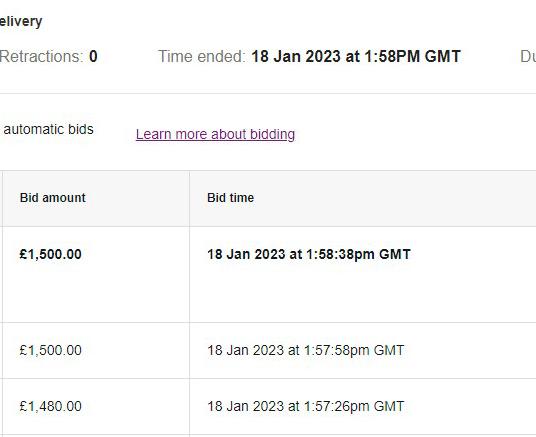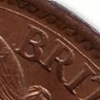|
|
The current range of books. Click the image above to see them on Amazon (printed and Kindle format). More info on coinpublications.com |
|
|
-
Content Count
2,538 -
Joined
-
Last visited
-
Days Won
162
Posts posted by secret santa
-
-
-
Photos please.
-
Well done - I spotted that in a Spink auction recently.
-
 1
1
-
-
-
-
13 minutes ago, DrLarry said:Could you please tell me.... this is Obverse VI F with reverse VI f ?
It is obverse 4 (Gouby F) and the pictured coins are F24 - Freeman 4+F (Gouby F+f), but the same missing leaf has been seen on (2) specimens of F22 (Freeman 4+D; Gouby F+d).
(no-one uses roman numerals to identify obverse types)
-
-
On a different subject, I have been studying the obverse 4 missing leaf types where all the examples that I've seen bear slight traces of the "missing" leaf and a weakened linear circle above the missing leaf. The example in Michael Gouby's book, however, shows a complete linear circle:

However, close examination suggests that these 2 pictures are of the same coin - compare the shading and the dark spot on the right hand side. Perhaps the 2nd picture was doctored (definitely not by Michael) to illustrate what the missing leaf might look like. Michael agrees with me and intends to include a different picture in any future updates to his book.
I therefore think that the genuine missing leaf types look like this, with weakened linear circle:
.jpg.0d35f4bfe229b028a24d8026397e5b13.jpg)
Which is probably what would be expected from a partially filled die in that area of the coin.
-
 4
4
-
-
I fear we shall never know.
-
On 1/22/2023 at 10:05 AM, secret santa said:Further to the above, I have a couple of 1861 pennies (F29 & F33) where the G of D:G: has been badly repaired (rotated) with both a "curved" and a "straighter" G punch so either of these could have been used to produce the VIGTORIA error.


-
 1
1
-
-
It's a "No" from me..............
-
 2
2
-
-
2 hours ago, Coinery said:For the record, though, ‘usual’ was my lazy way of referring to the other Gs on the coin.
Yes, I understood that and was just demonstrating that they're curved on my examples.😉
-
 2
2
-
-
11 hours ago, Coinery said:given the straight sides of the tail of the ‘usual’ G
On my proof and circulation 1862 pennies, the usual G is very definitely curved.


-
3 hours ago, Coinery said:I don’t believe it’s a coin that was minted having used the G of the other Gs present on the obverse.
The working die wouldn't have been created with a G in VICTORIA and therefore it must have been caused by manual intervention. London Coins note that the rogue "G" is of a slightly different format to the other proper "G"s (in D:G: and REG) and Michael Gouby suggests that it might have been caused accidentally through an intended die repair to the "G" of REG being carried out by a repairer forgetting that a "G" on the right of the incuse die will actually affect the left side of the struck coin, and inadvertently "repairing" with a "G" punch the "C" of VICTORIA instead which is on the right side of the die diametrically opposite the "G" of REG.
Anyway, the error must have been spotted quite quickly given the restricted numbers of affected coins that reached circulation, as demonstrated by the fact that only 10 surviving examples have so far been recorded out of huge numbers of 1862 pennies.
-
 3
3
-
-
1 hour ago, DrLarry said:Of course it may be the angle and a wear factor but it is interesting that the G of DG looks more like a C ...in the hand it that the case?
Just wear or damage. Definitely a G.
-

The above screenshot shows that I submitted a bid 2 seconds before the auction ended at 1:58 (I think I actually submitted it more like 20 seconds before the end) but was then able to enter another bid at 38 seconds after 1:58. This may suggest that the auction ends after 1:58 and 59 seconds but I have seen an auction continue beyond the minute after the end time.
-
Yes, ended on Wednesday.
-
-
Yes, my experiences range from 20-30 seconds to 3-4 minutes. At one point it says that auction is closed and then mysteriously continues running for a while. It never used to be like that, i.e I've only noticed it in the last 2 or 3 months.
-
-
I've noticed recently that my customary process of submitting my bid and confirming with less than 10 seconds to go mysteriously brings up another few minutes of bidding. Has anyone else noticed this and can they explain how and why it works like this ?
-
Mike, I'll add this to the rarest pennies site - can you supply links ?
-
I hope it wasn't tragic - he was suicidal for a while after his wife died.
-
14 hours ago, Peckris 2 said:I hope you avoided Captain Pugwash
And Seaman Staines.
-
 1
1
-
 Coinpublications.com
Coinpublications.com







Stuff to Make Us Laugh
in Nothing whatsoever to do with coins area!
Posted